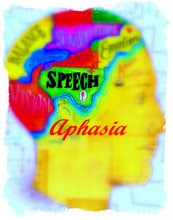 The brain can change its structure in response to experience and practice
The brain can change its structure in response to experience and practice Electrically stimulating the brain can help to speed up the process of learning, scientists have shown.
Applying a small current to specific parts of the brain can increase its activity, making learning easier.
Researchers from the University of Oxford have studied the changing structure of the brain in stroke patients and in healthy adults.
Prof Heidi Johansen-Berg presented their findings at
the British Science Festival in Bradford.
The team at Oxford has been conducting research into how the structure of the brain changes in adulthood, and in particular what changes occur after a stroke.
They have used an approach called functional MRI to monitor activity in the brain as stroke patients re-learn motor skills that were lost as a result of their illness.
One of the major findings is that the brain is very flexible and can restructure itself, growing new connections and reassigning tasks to different areas, when damage occurs or a specific task is practised.
As part of this research, they investigated the possibility of using non-invasive electric brain stimulation to improve the recovery of these motor skills; the short-term improvement in stroke patients had already been noted.
But an unexpected result was found when the same brain stimulation was applied to healthy adults: their speed of learning was also significantly increased.
Increasing activity To observe this effect, the team devised an experiment whereby volunteers memorised a sequence of buttons to press "like playing a tune on a piano".
While they were doing this, they were fitted with a "trans-cranial current stimulation" device, in which two electrodes are placed in a specific position on the head.
A very small current was passed between the electrodes in an arc through the brain and, depending on the direction of that current, either increased or decreased the activity of that part of the brain.
Prof Johansen-Berg explained that "an increase in activity of the brain cells makes them more susceptible to the kinds of changes that occur during learning".
 The studies employ a variant of the same MRI scan used in hospitals
The studies employ a variant of the same MRI scan used in hospitals The results of the button-pressing experiments showed the positive effects of just 10 minutes of the brain stimulation on learning, compared to a similar "placebo" setup in which the electrical stimulation was not used.
"While the stimulation didn't improve the participant's best performance, the speed at which they reached their best was significantly increased," said Prof Johansen-Berg.
Targeting the area of the brain that controls motor skills allows movement tasks to be learned more quickly, and the researchers envisage the technique could be used to help in the training of athletes.
The experiments have explicitly shown that stimulating the motor cortex of the brain can increase the speed of learning motor skills.
It is the hope of the researchers that the same method may be applied to other parts of the brain to improve educational learning, simply by positioning the electrodes in different locations so the current is focussed on the correct area.
The relative simplicity, low price (around £2,000 per unit), and portability of the technology may mean that, following further research, a device could be designed to be automated for use at home.
Looking to the future, Prof Johansen-Berg and her team plan to investigate the potential for increasing the effect, by stimulating daily over a period of weeks to months.
In the treatment of stroke patients, the technique could be used in parallel with current physiotherapy treatments to improve overall outcomes, which tend to vary widely.


